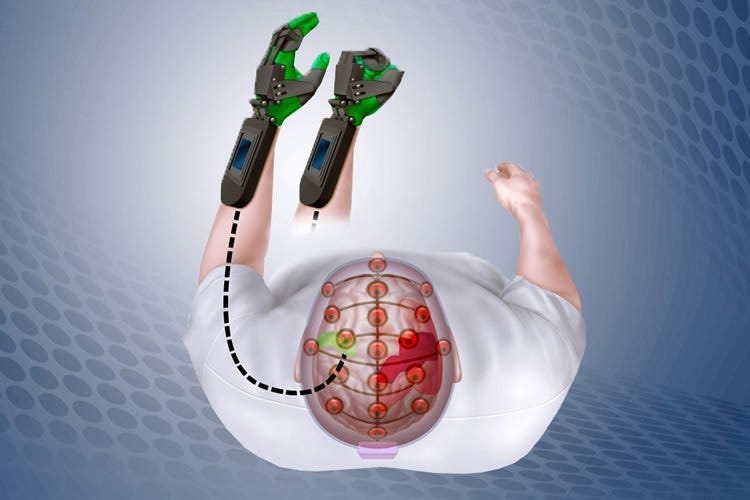Global Neuroprosthetics: Restoring Function and Empowering Lives
 vaishnavicmi
vaishnavicmi
A Revolution in prosthetics
Advancements in neural interface technology over the past few decades have opened up exciting new possibilities for restoring function to those with disabilities. Often referred to as neuroprosthetics or brain-machine interfaces, these systems use sensors to pick up neural signals from the body or brain and convert them into commands that can control external devices such as computer cursors, prosthetic limbs or even whole exoskeleton robotic suits. What was once only imagined in science fiction is rapidly becoming science fact as the field of it continues to progress at an incredible pace.
Opening the Doors to Restored Mobility
One of the major areas of focus has been the development of thought-controlled prosthetic limbs. By recording electrical signals directly from motor cortex Global Neuroprosthetics, decoding user intent, and driving motorized joints, these brain-machine interfaces are allowing individuals with amputations to re-gain natural, intuitive control over prosthetic arms and hands. Some of the most advanced systems on the market can now detect over a dozen different hand gestures and arm movements, improving users’ ability to perform everyday tasks. For those who have lost lower limb function, exciting new technologies like mind-controlled exoskeletons are helping restore independent walking and mobility. With ongoing improvements to neural decoders, biomaterials and powered joint designs, they are opening doors torestored mobility that was previously unimaginable.
Restoring Lost Senses
In addition to powering prosthetics, neuroprosthetic technology is also being applied to help restore lost sensory function. Brain implants that can detect and process signals from retinal or cochlear prostheses have allowed some blind and deaf individuals to experience rudimentary vision and hearing again. Using patterns of electrical stimulation to convey information about the visual or auditory environment, these sensory can provide basic object or speech recognition abilities. For patients grappling with paralysis, sensory feedback that transmit sensations like touch or proprioception are in development to create closed-loop control of limb replacements. With continued advancement, it may one day be possible to restore near-natural sensory modalities through direct brain connections.
Expanding Treatment for Neurological Disorders
They are also emerging as potential therapies for conditions affecting motor control and cognition. Deep brain stimulation (DBS), the use of implanted electrodes to precisely deliver electrical pulses to targeted brain regions, has shown great promise treating movement disorders like Parkinson’s disease and essential tremor. Clinical trials are now investigating the effectiveness of DBS for various mental health conditions as well. Brain interface technologies could potentially be harnessed to correct connectivity issues in epilepsy, retrain neural pathways after stroke, or assist memory and attention in Alzheimer’s disease or traumatic brain injury patients. As understanding of brain circuitry expands, researchers envision implantable tailored for a wide range of neurological disorders.
Global Growth in Research and Development
With incredible breakthroughs unfolding so rapidly, the field of neuroprosthetics has drawn massive interest and investment globally. North America remains at the forefront of developments in technologies like motorized limb replacements and brain-computer interfaces, with the United States home to pioneering research institutions like the Defense Advanced Research Projects Agency (DARPA) and major industry players. Powerful programs in Europe, like BrainGate in the EU and the NeuroBotX project in France, are leaders in neural signal processing, brain-machine interfaces and exoskeleton robotics. Large investments from initiatives like China’s Next Generation Artificial Intelligence Development Plan 2.0 are fueling intensive research on neuroprosthetics across Asia as well. As nations recognize both the humanitarian potential and strategic economic value of restoring and enhancing human capabilities with emerging technologies, global funding and collaboration in developing the next generation of neuroprosthetics is sure to grow.
The Future is Neural
With continuous refinement of materials, ethey lectrode designs, signal decoding algorithms and integration between prosthetics and biology, are poised to greatly improve quality of life in the coming decade. From providing independence for those with amputations to developing assistive devices for mental healthcare, the applications seem limitless. As brain-interface technologies become safer, more compact and powerful, completely implantable systems may one day seamlessly merge restoration and augmentation. While regulatory and technical hurdles remain in realizing visions of mind-controlled robotic limbs or direct brain upgrades, the rapid pace of progress suggests an exciting future where people can choose to upgrade and enhance natural abilities with neural technologies. Undoubtedly, the future will be neural. :Neuroprosthetics, also known as brain-machine interfaces, utilize electrodes and sensors to facilitate connections between the brain and external devices. Initially developed to treat conditions like paralysis, these systems have rapidly evolved and now offer hope for restoring functionality to those with neurological disorders or injuries. Here we explore some of the most promising areas of development and their potential to transform lives around the world.
Restoring Mobility through Brain-Controlled Prosthetics
One major success of it research has been in creating advanced brain-controlled prosthetic limbs. Through implanted electrode grids and sensor arrays, these prosthetics are controlled directly by thought, bypassing traditional physical control methods. In groundbreaking cases, paralyzed patients have been able to control robotics arms and even their own paralyzed limbs using only their brain activity. Some individuals have even been able to regain near-natural mobility through systems that provide proprioceptive and tactile feedback directly to the brain. As electrode interface technology continues enhancing its recording resolution, thought-controlled prosthetics will become more intuitive and life-like than ever before. Their widespread adoption could vastly improve mobility for millions coping with limb differences or paralysis.
Treating Neurological Disorders with Stimulation Therapies
Another active area is the development of its devices to treat conditions like Parkinson's disease, epilepsy, and stroke. Devices like deep brain stimulators have been remarkably effective against movement disorders like Parkinson's by delivering electrical stimulation directly to problematic areas in the brain. Newer responsive stimulation systems can now detect and respond to abnormal brain activity in real-time, offering more precise treatment. Experiments with transcranial stimulation—which applies electromagnetic currents to brain regions noninvasively from outside the skull—show promise for ailments like depression as well. Looking ahead, individualized brain stimulation therapies tailored through Big Data analytics may revolutionize care for numerous neurological illnesses.
Enhancing Cognition and Sensory Abilities
Perhaps most futuristic are exploring the enhancement of normal brain functions. Brain-computer interfaces have allowed paralyzed individuals to communicate via direct thought alone. However, developments in neural interfacing may enable entirely new modes of interaction between technology and the human mind. Implanted memory prosthetics are being tested to augment natural memory formation and recall through electrical encoding of experiences. Sensory prosthetics aim to simulate vision, hearing, and even entirely new sensory modalities, potentially enhancing human perception. Though such "neuroenhancement" crosses ethical boundaries for some, their long-term viability could redefine what's possible for the human experience.
Global Outlook and Challenges
Of course, major barriers remain before neuroprosthetics' benefits can be broadly realized worldwide. Developing ultra-miniature, long-lasting implantable devices presents immense technical challenges. Large-scale clinical adoption will require addressing regulatory hurdles and ensuring equitable global access. Most notably, long-term neural interface safety and the ethical governance of human enhancement technologies warrant careful consideration. However, with continued multinational collaboration and open-access data sharing, these issues can be navigated responsibly. If current exponential growth trends continue, they may eventually offer relief for millions suffering from conditions currently deemed incurable. Their arrival could herald a new era where disability is virtually optional through direct neural augmentation of the human body. Though a long road lies ahead, ongoing innovations in this burgeoning field continue fueling hope that such a future may not be far off.
Get More Insights on- Global Neuroprosthetics
Subscribe to my newsletter
Read articles from vaishnavicmi directly inside your inbox. Subscribe to the newsletter, and don't miss out.
Written by
